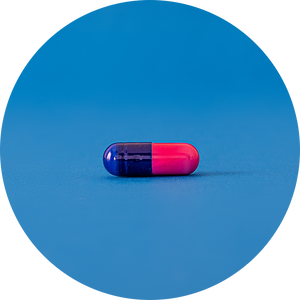There is no denying that age and erectile dysfunction are connected. That doesn’t mean that it can’t happen in men of all ages, just that it’s more likely to occur in older men. Fortunately, there are plenty of effective treatment options available to help alleviate the symptoms.
If you are able to get out in front of it and manage risk factors early, you might not even need to use any of the treatments.
When Does Erectile Dysfunction Start?
Depending on the cause of it, erectile dysfunction can happen at any age. Some men might have issues starting with their very first sexual encounter. For others it might be an issue that develops much later in life.
Based on several studies we can make some conclusions about when to start looking out for erectile dysfunction. One of the earliest studies into the relationship of age and erectile dysfunction was the Massachusetts Male Aging Study. Over a thousand men between the ages of 40 and 70 participated in the study between the late 1980’s and the late 1990’s.
The men reported several key changes as they aged:
- Men in their 40s reported having sex one less time per month and achieving three less erections on average.
- Men in their 50s reported having sex two times less per month and achiveing nine less erections on average.
- Men in their 60s reported having sex three times less per month and achieving 13 less erections on average.
Another discovery found during this study was the overall increase of the odds of erectile dysfunction each decade. The researchers concluded that men in their 40s had a 40 percent chance of experiencing erectile dysfunction, men in their 50s had a 50 percent chance, men in their 60s had a 60 percent chance, and men in their 70s had a 70 percent chance.
In regards to men under the age of 40, there have been a few studies performed. One study involved over 2,000 men and concluded that the rates of erectile dysfunction in men between the age of 20 and 39 were between four and six percent. However, another study had this number much higher. Going so far as to say the rates were eight percent for men in their 20s and 11 percent for men in their 30s.
Based on looking at each of these conclusions all at once, the odds of experiencing erectile dysfunction seem to make a huge leap around the age of 40. After reaching this milestone, the chances of ED seem to increase by roughly one percent every year.
What To Expect With Erectile Dysfunction
There are three symptoms associated with erectile dysfunction: difficulty achieving an erection, difficulty maintaining an erection, and a reduced sex drive. It’s possible to experience just one of these issues, but they are often experienced together. Occasionally experiencing one or more of these symptoms is perfectly normal, even as often as 20 percent of the time. However, if the frequency of these issues is occurring more than that amount, or increasing in general, it could be the sign of erectile dysfunction.
In the event that you do have erectile dysfunction, there are more than just physical symptoms. Experiencing difficulties with erections can lead to several psychological symptoms including performance anxiety, depression, low confidence, and guilt. In turn, these psychological conditions can increase the severity of the erectile dysfunction creating a vicious cycle. These issues, along with erectile dysfunction, can lead to problems developing between you and your partner.
Is There A Test For Erectile Dysfunction?
There isn’t exactly a test for erectile dysfunction, but there are tests that can help to identify the potential cause of it.
Erectile dysfunction is often a symptom of an underlying medical condition, such as heart disease, high blood pressure, diabetes, or high cholesterol. If these issues are properly treated and managed, it could help to reduce the frequency and severity of erectile dysfunction.
If you are experiencing erectile dysfunction, the first step towards treating it will be to figure out why it’s happening. You should schedule an appointment with a doctor, preferably a urologist, in order to determine the cause.
Some of the tests that you can expect during your visit include:
- A questionnaire. Your doctor will need to know a lot of personal details about your sex life. You should expect questions about your erections, sexual satisfaction, and libido. Although these questions might be uncomfortable and difficult to discuss openly, it’s important that you are honest and answer them truthfully.
- Physical exams. Blood pressure plays a very important role in erections so this will definitely be measured. Your doctor might also perform tests to determine if the issue is related to a loss of sensation and sensitivity in your penis or testicles.
- Lab tests. You may need to give a blood or urine sample during your visit. Once they are sent to the lab and studied, the results should be able to tell if the erectile issues are related to heart disease, kidney disease, atherosclerosis, diabetes, or low levels of testerone.
- Ultrasound. Using a device similar to a wand, your doctor will create an image of the flow of your blood as it enters and exits your penis. This will provide insight into the speed, consistency, and direction of your blood as it travels through your arteries, veins, and blood vessels.
- Nocturnal test. This test is a fairly simple one and you will administer it yourself at home. Your doctor will provide you with a plastic ring that you will wear on your penis while you sleep. The device will monitor the number, duration, and strength of your erections throughout the night. A man will generally experience between three and five erections while sleeping, lasting between 20 and 30 minutes. If you are unable to have any erections during sleep, then erectile dysfunction is most likely due to a physical condition. If the erections are in the normal range, then erectile dysfunction is most likely psychological in nature.
What Are the Treatments For Erectile Dysfunction? </h2>
As you grow older it will be more likely that you experience erectile dysfunction. Additionally, there is no permanent cure for erectile dysfunction. While this may sound like a whole bunch of bad news, there are several highly effective options that can help you to significantly reduce the symptoms.
If you are able to get ahead of the issue and treat it early, then the frequency and severity of erectile dysfunction should be much more manageable.
Lifestyle Changes
The best treatment is always going to be prevention. Obviously, you can’t do anything about getting older, but there are still plenty of things that you can do in order to help lower your odds of experiencing erectile dysfunction.
- Daily exercise. You should start trying to get at least 160 minutes of exercise every week. It doesn’t have to be anything too strenuous, just a daily 20-30 minute walk can be enough to help you stay in better shape.
- Change your diet. Remember that “you are what you eat.” Instead of eating salty, fatty, or sugary foods, you should start eating more fruit, vegetables, whole grains, and fish. Eating a healthier diet can reduce the complications that come with high blood pressure, high cholesterol, diabetes, and heart disease.
- Stop smoking. If you currently smoke then you should consider quitting as soon as you can. Smoking is bad for your overall health and is the leading cause of erectile dysfunction in men under 40.
- Consider therapy. Issues like stress, depression, and anxiety often go ignored, but they are major risk factors for erectile dysfunction. These mental health issues can end up being both the cause and symptoms of erectile dysfunction.
Oral Medications
Although they will absolutely help, sometimes making lifestyle changes might not be enough. In this case you should consider getting a prescription for an erectile dysfunction medication. Whether it’s Viagra®, Cialis®, or Levitra®, they all work the same way.
By increasing the blood that flows into your penis and decreasing the blood that flows out of it, you will be able to achieve and maintain an erection firm enough for sex.
These drugs are normally very effective, but do come with potential side effects and can interact dangerously with other medications. It’s important to talk with your doctor about whether these drugs are safe enough for you to use.
Vacuum Pumps
In the event that your doctor doesn’t recommend taking medications, there are still other options available. One of the more popular methods is to use a vacuum pump.
It might take a few tries to perform correctly, but the process should look something like this:
1. Insert your penis into the tube chamber and create a firm seal against your groin.
2. Use the battery or hand operated pump and create a vacuum in the chamber.
3. Blood should flow into your penis after a few minutes and you should have an erection.
4. Use the valve to release the pressure and remove the device.
5. Place a constriction band around your penis in order to keep the erection.
Vacuum pumps may come with a few bruises, particularly with new users, but are overall fairly safe with few side effects. The most important thing to keep in mind is that the rings should only be used for 30 minutes at most. After that, you risk causing permanent nerve damage in your penis.
The Takeaway: Based on several studies, the odds of experiencing erectile dysfunction take a huge jump around the age of 40 and increase every year after.
There is no exact age for when erectile dysfunction starts, but you should start paying attention to potential issues around the age of 40. Making some lifestyle changes early on can help to reduce your odds of experiencing ED.
If you are unable to prevent erectile dysfunction from happening, you can use a prescription ED medication or vacuum pump to help treat the symptoms.
SOURCES
Modifying Risk Factors in the Management of Erectile Dysfunction: A Review.
Vacuum device placed around the penis to treat erectile dysfunction
Sildenafil in the treatment of erectile dysfunction: an overview of the clinical evidence
Erectile dysfunction and mental health in a general population of older men
Effects of cigarette smoking on erectile dysfunction
Diagnosis of Erectile Dysfunction | NIDDK
Association of Diet With Erectile Dysfunction Among Men in the Health Professionals Follow-up Study
Erectile Dysfunction (ED) | NIDDK.
Physical Activity to Improve Erectile Function: A Systematic Review of Intervention Studies.
Prevalence and Risk Factors for Erectile Dysfunction in the US
Erectile dysfunction in fit and healthy young men: psychological or pathological?












